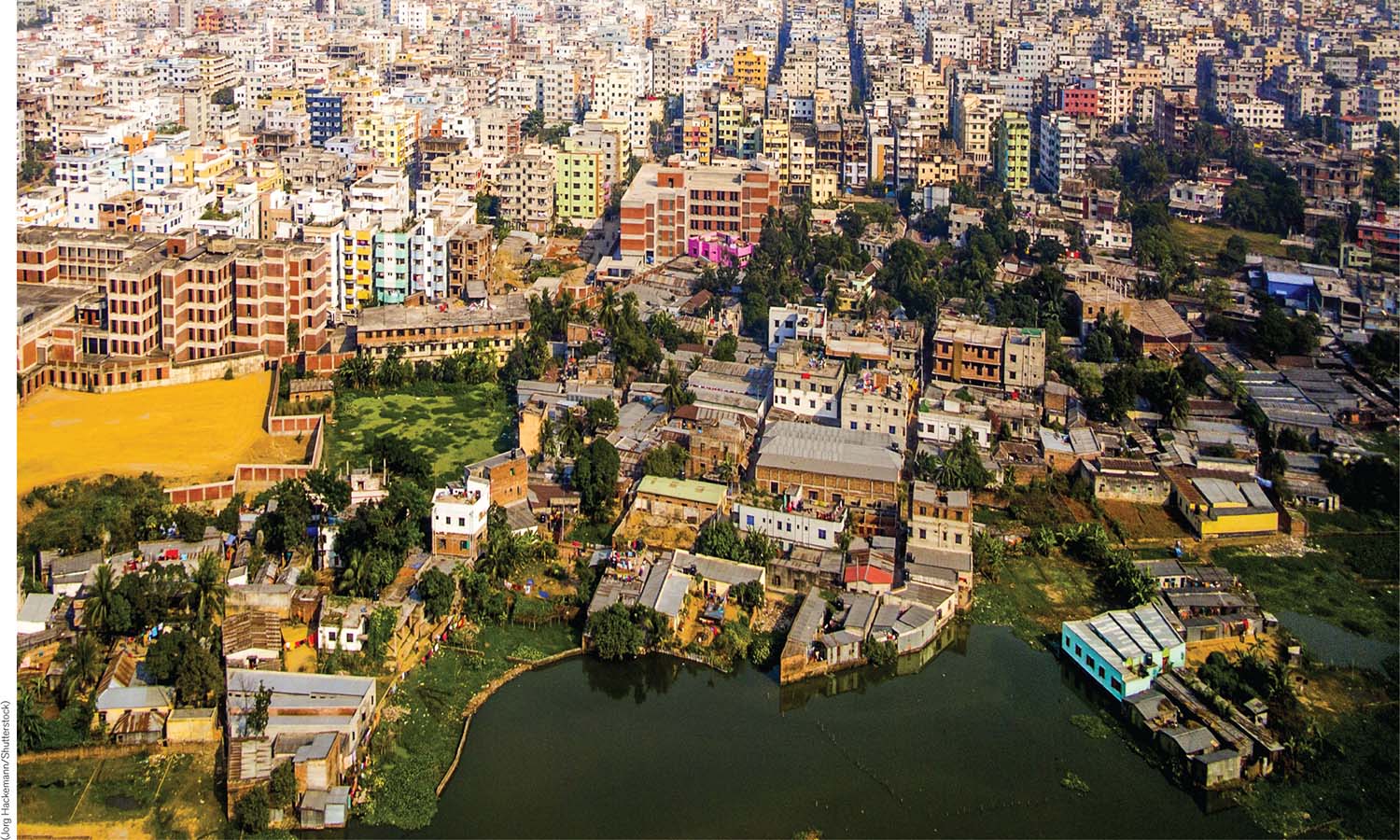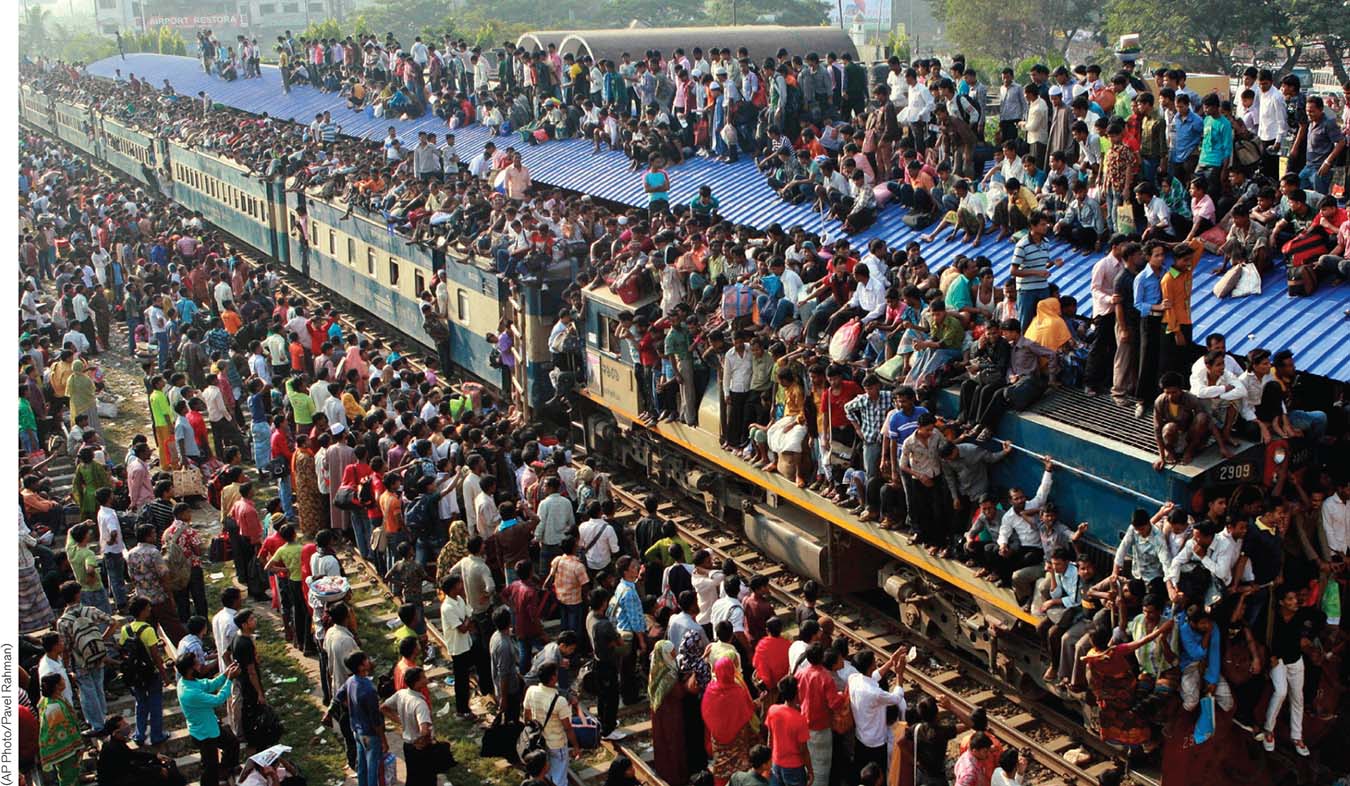Chapter Introduction
CHAPTER 5
Human Populations

Central Question: How can we achieve sustainable human populations?
 SCIENCE
SCIENCE
Explain the distribution and dynamics of global human populations.
 ISSUES
ISSUES
Analyze the environmental impact of fertility, development, resource consumption, and migration.
 SOLUTIONS
SOLUTIONS
Discuss the social, political, and economic factors that support sustainable human populations.
Bangladesh’s Lessons for Environmental Scientists
The challenges faced by the people of Bangladesh dramatically demonstrate issues arising from a population growing beyond the capacity of its environment to support them.

Tink. Tink. Tink. This is the sound of monsoon rains pinging against the tin roof of a shack in Bangladesh. Imagine, for a moment, that this is where you grew up: Each night you sleep on the dirt floor, squeezed into the same tiny room with four or five other members of your family. Your entire home is about 100 square feet in size, 25 times smaller than a typical American home. When your mother cooks on the wood-
Life in Bangladesh, one the world’s most densely populated countries, is not easy. Nearly 150 million people live on this flood-
“The key problem facing humanity in the coming [21st] century is how to bring a better quality of life—
Edward O. Wilson, distinguished ecologist
Sadly, their options will only get worse as Bangladesh’s population continues to expand. Researchers estimate that population will reach 218 million by the middle of this century, with most residents living in slums, lacking proper sewage disposal and electricity. The country hasn’t produced enough food for its people since the 1950s, and agricultural land has only declined since, replaced by living spaces. By 2060 there may be none left at all.
demography The statistical study of populations, generally human populations, including their density, growth, age structure, birthrates, and death rates.
Bangladesh’s struggles provide a cautionary tale for the wider world. Prior to the Industrial Revolution, the human population on Earth numbered less than 1 billion. It has soared over the last 200 years. Halloween day of 2011 was a particularly frightening day for environmental scientists interested in demography, the study of the statistics of human populations. The United Nations christened it the “Day of Seven Billion,” when the world’s population crossed that threshold. “Our world is one of terrible contradictions,” Ban Ki-
Rich or poor, these 7 billion bodies require food, water, and other natural resources to build their homes and feed their families. Not only does this place a heavy toll on the functioning of natural ecosystems and our global economy, but many environmental scientists believe that the resources we depend on are running out. The richest may see their quality of life decline, while the poorest among us have little hope. The World Wildlife Fund’s Living Planet Report predicts that, if present trends continue, by 2050 the productive capacity of nearly three Earths will be needed to meet the needs of the world’s 8 to 11 billion residents (see Chapter 1, page 20). It’s a problem that ecologist Paul Ehrlich famously called the “population bomb,” and population growth represents one of the most fundamental challenges when it comes to balancing human rights and environmental sustainability.
Central Question
How can we achieve sustainable human populations?